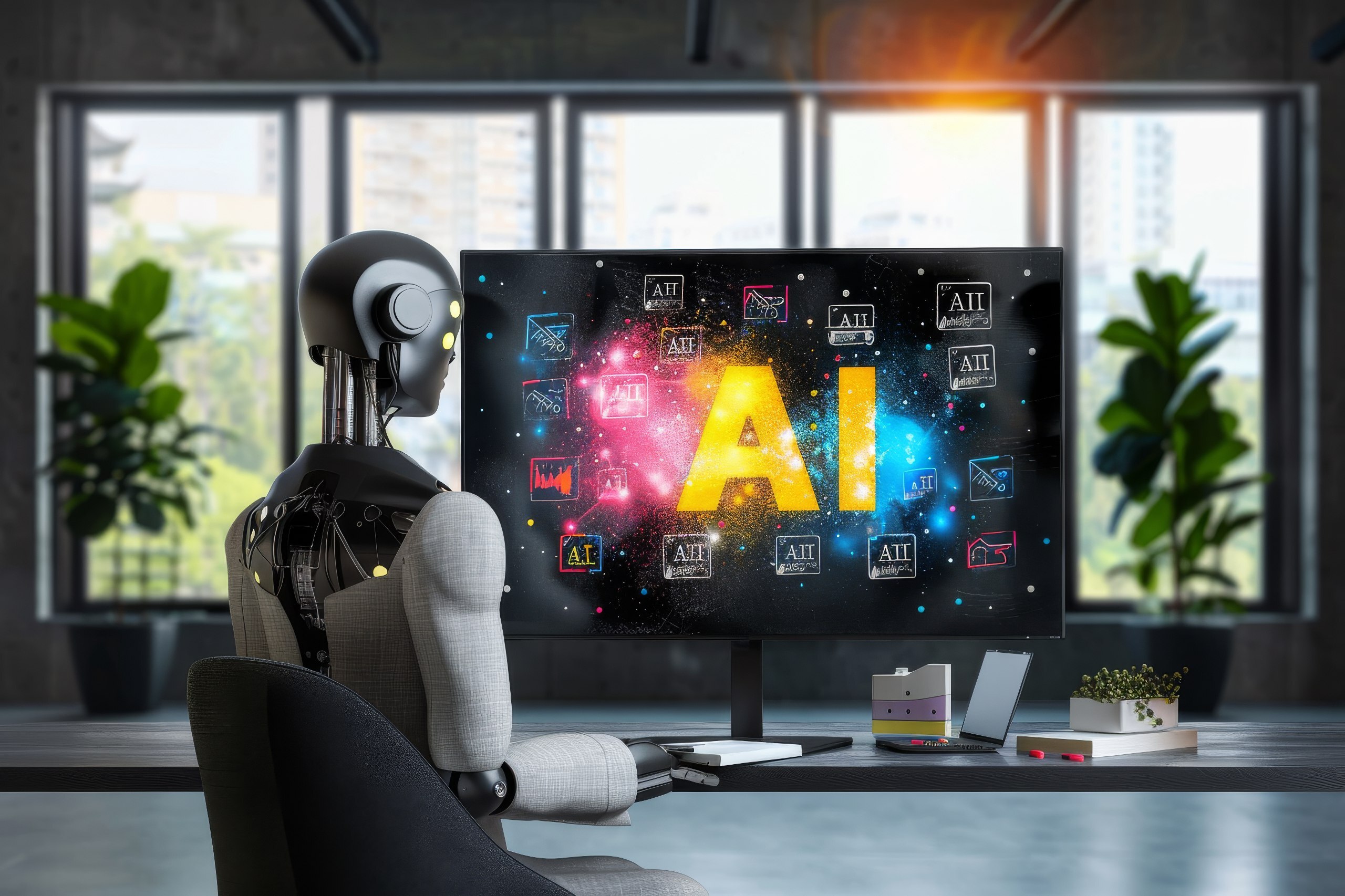In this advanced technological world, where people are busy catching up on their professional lives and barely have time to care for themselves and their homes, grocery shopping becomes a challenge they must overcome.
Today, AI is leaving a transforming impact on almost everything around us, including things from healthcare and education to manufacturing and logistics. Surprisingly, it is still lacking in transforming the commonest task for all of us, i.e., grocery shopping.
In this blog, you will delve deep into the concept of AI in Grocery Shopping, Build Future AI’s AI-Powered Grocery Shopping App, and how it transforms our conventional online and offline shopping.
Problems with the Traditional Shopping Apps
Imagine Sarah is a working married woman who has to shop grocery for the whole family online. Noting down all the items on her notepad, then typing and searching for each item on her conventional grocery shopping app, adding them to the cart, and moving ahead with the payment is how typically she proceeds. What happens next? Her husband tells her that he needs some additional items that she forgot to buy, and they end up in a catfight.
Oh God! Firstly, most of her time was spent making a list and searching for each item on the app to add them to the cart. Secondly, she still forgot to add some of the most needed items. What’s the worst? She will have to repeat the same process the next time. So frustrating!
Like Sarah, most people who do the grocery shopping for their families are struggling. Managing their jobs and personal lives is already an everyday battle, and grocery shopping adds more difficulties to it.
Let’s break down the problems of traditional shopping apps that Sarah faced into points:
- Time-Consuming Process: Noting down all the required grocery items and finding each one of them, the app consumes a significant amount of time that can be used to do some other valuable tasks and activities.
- Difficulty In Finding Items: Supposing she had 30 items on the list, Sarah would definitely have struggled to find all items on the app, leading to frustration and potential forgetting of some important items.
- Limited Organization Features: Conventional shopping apps do not have smart features like automated categorization of products, which would make it difficult to create effective shopping lists.
- Potential For Forgetting Items: Despite her efforts, Sarah forgot to buy some of the most essential items, and this highlights the shortcomings of the traditional shopping app, how it lacks in helping users remember all their necessities.
- Inconvenient Process For Adding Items: The process of typing and searching for each item is quite problematic and consumes most of the time, discouraging people from shopping efficiently.
- Communication Challenges: Sarah’s conflict with her husband highlights how the traditional methods of shopping lead to miscommunications and disagreements, which could probably be solved in smart ways.
- Repetitive Process: The need to repeat the same time-consuming process every time Sarah shops for groceries adds unnecessary hassle and frustration to her life.
- Impact On Work-Life Balance: The inefficiencies in traditional shopping apps make grocery shopping another struggle for Sarah, affecting her job and personal life and contributing to the stress and difficulty of her daily responsibilities.
Thus, various problems and challenges are associated with the traditional shopping method depicted in Sarah’s grocery shopping experience.
How has AI in grocery shopping transformed the customer experience?

The reason why artificial intelligence is gaining rapid popularity is its groundbreaking ability to process large data sets, identify the underlying patterns, make predictions and recommendations, and automate actions based on the same. This automation and its recommendations have helped humans to increase their efficiency and have transformed the traditional ways of executing tasks.
AI can learn from the user data, including past purchases, and predict their needs, likings, dislikes, and future decisions. Moreover, its other superior techniques, like natural language processing (NLP) and computer vision (CV), that allow AI models to understand and interpret human languages and recognize and respond to visual inputs have changed how humans used to interact with technology, making it easy and less time-consuming. For a comprehensive understanding of the Benefits of AI in Grocery Shopping Solutions for customers, explore the following key points:
- Dynamic Recommendations
AI in grocery shopping apps can study customer data, past purchases, and the bill amount of each purchase and understand their preferences and buying habits. Using the data, it produces recommendations on similar products at low prices or the products that the customer might like to buy, etc. Therefore, whenever the customer makes a purchase, they will see the recommendations and can modify their cart items according to them. This ensures that the customer shops efficiently and always gets all the essentials.
- Budget Friendly Shopping
AI in grocery shopping will let customers set a budget scale according to which it will automate the curation of their shopping cart, like recommending items that best suit their interests and are on heavy discounts. This will help them shop smart and avoid buying impulsively.
- Never Miss An Essential
The AI-backed grocery shopping app employs sophisticated algorithms that analyze customer’s past purchases and preferences, automatically creating a shopping list for them, including all the items they frequently buy. Hence, the automated list will be tailored to their needs and preferences, ensuring they never miss out on an essential purchase.
- Voice Activated Shopping
With the use of natural language processing (NLP), customers can just recite the list of items to the voice feature on their AI shopping app. It will interpret their voice, auto-search the recited items, and add them to their cart in milli-seconds. Hence, the frustrating process of typing and searching is now replaced with a convenient approach to listing items in their grocery shopping cart.
- Forgot the name? Snap & Buy
The AI-powered shopping app will also be able to process and recognize visual inputs like images, which can tackle the difficulties in finding the item and enable customers to upload the image of the product they are trying to find and get them at their fingertips just on one tap. In advanced AI shopping apps, this feature can also help users upload their shopping list and add all the items to the cart with just one click.
- Shared Grocery Lists:
AI-powered grocery shopping solutions will help users share the grocery list with other family members; for example, if a user is married, they can share the list with their spouse so the latter can add items that they need. This way, the couple can shop smartly and take advantage of everything important.
- Time is Money
Time and freedom are the most superior forms of wealth one can have. With a smart AI-powered grocery shopping app, they can shop smart and efficiently, which saves lots of time, freeing them to do valuable things that they love to do.
- Tracking and Transparency
After the user pays, AI will place their grocery order and provide real-time insights to the users through a tracking feature where the current location of their packages will be shared with them. Hence, this helps in keeping transparency with the customers and gives them real-time information about the purchase. Moreover, this is also beneficial in case the user wants to modify or cancel their purchase according to the company’s policy and flexibility.
- Smart Collaboration
Artificial intelligence will study users’ shopping list items, analyze local society, and make automated collaborations with them to make products readily available to users. This will help in quick, automated, and transparent deliveries, reducing human errors and enhancing the user shopping experience.
How can developing an AI in grocery shopping benefit an organization?

This is a competitive and internet-driven world where many startups and businesses compete against each other to catch the attention of their potential customers and promote their products. However, this can’t be turned into reality if they don’t adopt optimal technologies to support their branding.
The ability of AI to rapidly process the data and target the right customers out of the pool of customers with its predictions and recommendations can revolutionize any business effectively.
With the integration of artificial intelligence in business systems, websites, and applications, businesses can dynamically expand their domains and streamline their business operations. To know deeply the key benefits of AI in Grocery Shopping for businesses, let’s delve deep into the discussion below:
- Enhanced Data Analytics and Predictive Insights
Be it automated record keeping, inventory management, online customer base management, marketing analytics, or supply chain analytics, AI-backed data-driven insights and predictions can help keep the check on each product, customer, and sales individually. This helps keep the guesswork out of the picture and provides real-time data-driven insights to business owners, as well as managers. Such predictions and alerts can help in avoiding tight situations like running out of stock, overstocking etc.
- Effective Marketing
A large pool of people online makes it nearly impossible to identify the target customers manually. To tackle this problem, AI studies customer data, including their web search history, past purchases, frequency of purchases, amount of purchases, and app searches, and analyzes the underlying patterns to understand their interests and needs, thereby identifying potential customers for the business. As soon as the AI algorithm determines the potential customer, it starts recommending the company’s products that are closest to what the customer is searching for. Thus, by showing the right product to the right person, the AI model boosts sales and profit for the business.
- Smart Stock Management
AI algorithms can automatically keep a record of each product present, like quantity of products, expiry dates, data on product sales, and more. Keeping an automated check on them can provide stock insights to the respective inventory manager, alerting them about low stock, expiry of products, and predictions to boost sales reduces the stress on managers. It enables them to work effectively on strategic tasks, which can boost the return on investment(ROI) of the business.
- Personalized Promotions
As AI identifies the target customers based on their data, it automatically starts showing the relevant product recommendations. It offers discounts to convert the lead, which helps the business to stand out from the competition and be on the front foot to offer relevant products to the customer. Thus, by tailoring product promotions to the right strata of customers, AI helps in effective marketing and elevates the revenue generation for the company.
- Dynamic Pricing
AI models can also analyze the competitors, their marketing analytics, and the data of local society around the business. Moreover, it considers the demand, supply, and other trends of the market. Based on all this data, AI automatedly sets the appropriate pricing of products and offers discounts to catch potential customer’s attention, which helps the business boost sales and prepare business strategies on the basis of analytics and recommendations by AI.
Thus, adopting AI is no longer a choice but a need to stand out and work on growing the business reach and sales.
Challenges and Future
AI-backed automation and insights boost the efficiency and accuracy of all operations. However, AI development and integration still come with lots of challenges. Let us discuss them below:
- Trust
A Dunnhumby Study stated that only 20% of Americans completely trust AI. Therefore, to build an online grocery shopping platform, it is important to create brand value and gain the public’s trust by providing effortless and quality services so that they can invest their time and money in organization’s services without hesitation.
- Infrastructure
It is important to do an IT infrastructure audit before getting an AI grocery shopping solution developed to ensure the system’s compatibility with the advanced AI algorithm; failing to do so can lead to model dysfunction, inaccuracy, and data breaches. Hence, an appropriate and advanced IT infrastructure would be required to integrate the AI model for grocery shopping.
- Budget Availability
Developing and incorporating AI software in the existing systems and procuring equipment like cameras, sensors, etc., would cost thousands to millions, depending on the company size. Hence, this is an expensive but one-time investment that companies must make to adopt advanced technological means. A study also demonstrated that AI will add $113 billion to the grocery industry by 2025. The stats show the growth AI is predicted to bring to the grocery industry.
- AI Training
AI training can be challenging due to the limited availability of high-quality datasets, as most datasets are of low quality and have missing values. To tackle this challenge, the company must emphasize data cleaning and validation to ensure that the AI model will be trained from a high-quality data set so the results will be efficient and accurate.
Groce-it: Build Future AI’s Grocery Shopping Solution

Groce-it is a future-ready AI-powered grocery shopping application developed by Build Future AI. It has exciting features and functions that automate many operations like listing, cost-prediction, sorting, single-tap categorization, and much more. The AI model not only assists in online grocery shopping but also makes it easy to shop offline with amazing features like an in-store item finder and offers the best-suited collaborations.
To learn more about our AI development services at Build Future AI, contact us via email at business@buildfuture.ai and pave your way to the transforming world of AI!




